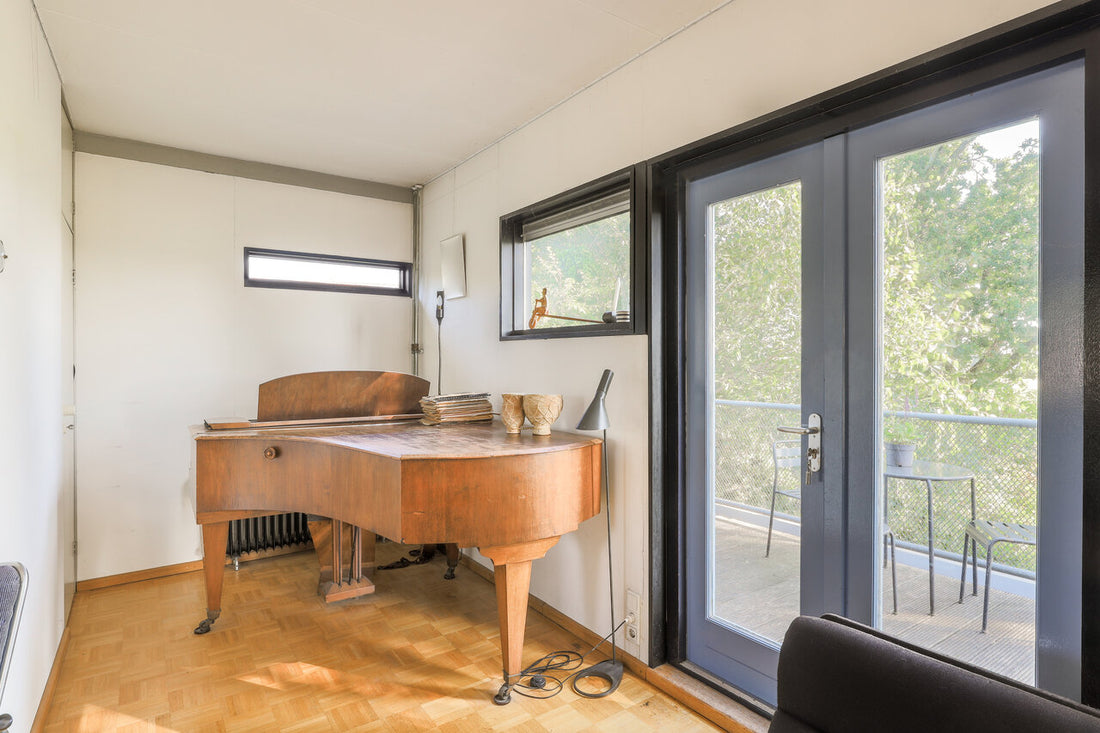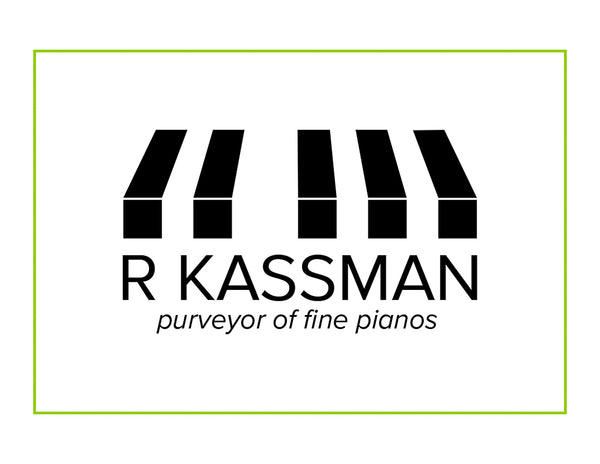
Crafting the Perfect Piano Room
The addition of a Steingraeber, Grotrian, or Estonia piano to your home is more than just a musical investment – it's an opportunity to create a space that not only celebrates the beauty and artistry of your European piano, but also enhances your playing experience and overall enjoyment of music. As you prepare to bring one of these exquisite pianos into your home, you may be pondering how best to design a dedicated piano room to showcase the instrument, optimize your musical experience, and create a space that reflects your passion for the art of piano.
In this article, we will provide guidance and inspiration to help you navigate the process of designing your dream piano room. We will discuss various design considerations and delve into key elements that contribute to creating the ideal environment for your Steingraeber, Grotrian, or Estonia piano.
1. Room Layout
Thoughtfully choosing the location and orientation of your piano within your piano room can significantly impact both visual appeal and playing experience. When selecting the optimal layout, consider the following factors:
1.1 Space and Dimensions
Ensure that your piano room offers enough space to accommodate your instrument and allows for comfortable movement while playing. At the same time, take note of the piano's size and select an area that provides balanced proportions and showcases your instrument as the focal point of the room.
1.2 Natural Light Considerations
Natural light provides a comfortable ambiance, but it's crucial to protect your piano from direct sunlight, which can damage the finish and cause tuning issues due to temperature fluctuations. Place your piano away from windows or use shades or curtains to control light exposure.
1.3 Room Functionality
Consider the primary functions your piano room will serve, such as practicing, entertaining guests, or providing a serene retreat for your family. Make sure the room layout allows for additional seating, music storage, and any other elements essential to your desired purpose.
2. Acoustic Optimization
To fully enjoy the exceptional sound quality of your Steingraeber, Grotrian, or Estonia piano, it's vital to optimize the acoustics within your piano room. Consider these tips as you design your space:
2.1 Sound Reflection and Absorption
Pay attention to the balance of reflective surfaces (such as hardwood floors, glass windows, and bare walls) and absorbent materials (like carpets, curtains, and upholstered furniture) within your space. Too much absorption can result in a dull sound, while excessive reflection may cause acoustical imbalances. Strive for a pleasing blend to achieve the best sound quality.
2.2 Room Shape and Size
Square or rectangular spaces are generally most suitable for achieving balanced acoustics. Be aware that smaller rooms can lead to a boomy sound, while larger rooms may require additional sound-absorbing materials to maintain a rich, vibrant tone.
2.3 Acoustic Treatments
If necessary, you can add specific acoustic treatments such as wall and ceiling panels or bass traps to further refine the sound in your piano room. Consult with an expert in acoustics to assess your space and recommend appropriate enhancements.
3. Climate Control
Maintaining a consistent temperature and humidity level within your piano room is essential to protect your European piano and preserve its performance quality.
3.1 Ideal Temperature Range
The optimal temperature for a piano room ranges from 68°F to 72°F (20°C to 22°C). To maintain this range, install a reliable heating and cooling system and avoid placing your piano near heat sources like radiators or fireplaces.
3.2 Humidity Control
The ideal relative humidity level for a piano room is around 42-50%. Fluctuations in humidity can cause the wood in your piano to expand and contract, leading to tuning issues and potential damage. Consider investing in a humidifier or dehumidifier to regulate the moisture in the air and maintain a stable environment.
4. Aesthetics and Personalization
The decor and personal touches within your piano room play a crucial role in making the space uniquely yours and enhancing the visual appeal of your European piano.
4.1 Color Palette
Select a color palette that complements your piano and aligns with your personal taste. Lighter colors can create a sense of spaciousness, while bolder hues offer a more dramatic effect. Choose colors that evoke a sense of harmony and tranquility for the ideal piano room atmosphere.
4.2 Artwork and Decor
Personalize your piano room with artwork, wall decor, and other decorative accents that reflect your style and pay homage to your musical passion. Consider adding music-themed artwork, family portraits, or abstract pieces that resonate with your aesthetic preferences.
4.3 Lighting
Incorporate various lighting options, such as floor lamps, wall sconces, or pendant lights, to create a warm and inviting ambiance. Proper lighting can transform your piano room into a cozy, elegant space that encourages creativity and inspires your best performances.
Conclusion
By carefully considering these key aspects of room design and applying your unique taste and vision, you can create a stunning piano room to display your Steingraeber, Grotrian, or Estonia piano and elevate your musical experience. Embrace the opportunity to design a space that reflects your passion for music, showcases your elegant European piano, and provides an inspiring sanctuary for your musical journey.
Let the team at R. Kassman help you find the perfect Steingraeber, Grotrian, or Estonia piano to be the centerpiece of your dream piano room. Celebrate your love for music and design a space where you can grow, create, and find endless inspiration.
Visit the best piano store in the bay area for more information. Ask for Ric Overton.
